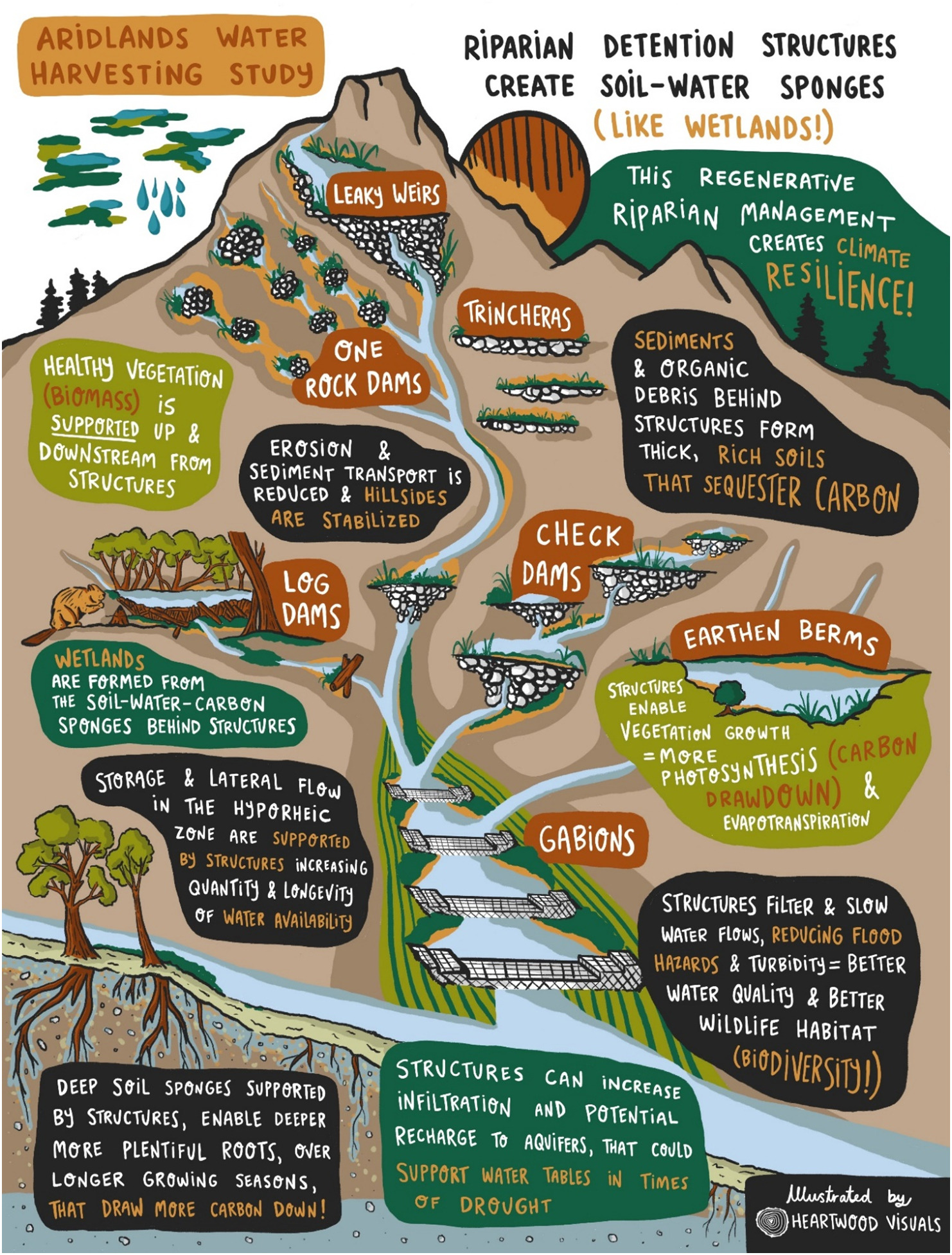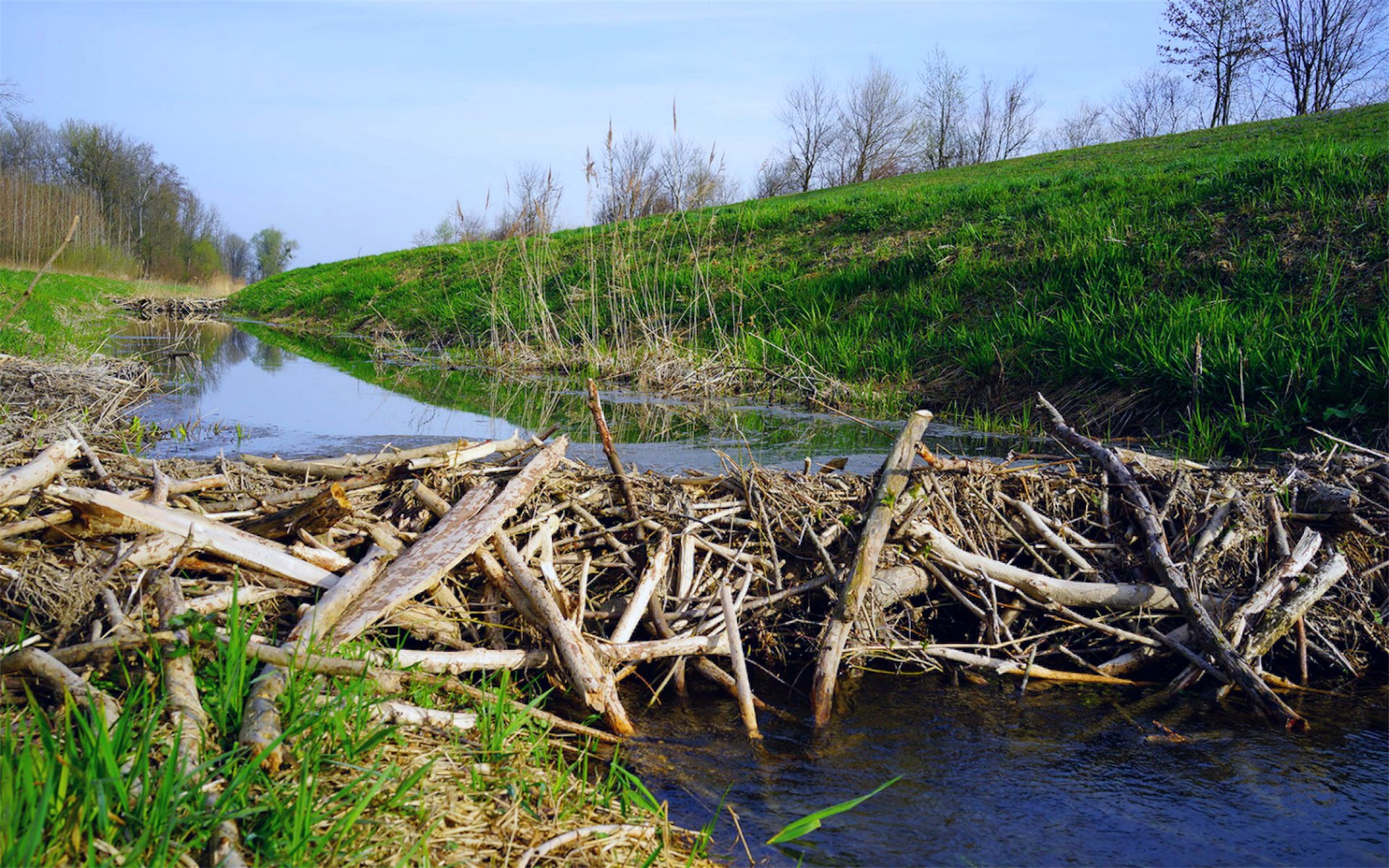How low-tech ecosystem engineers can rewater the West
There’s a good chance that, in recent months or years, you’ve heard the terms aridification and desertification. Aridification is the gradual change of a region from a wetter to a drier climate. Desertification is the process by which fertile land becomes desert and occurs when water availability declines and causes the soil and vegetation to degrade.
In a new article from a team led by Laura Norman of the U.S. Geological Survey and Rattan Lal, a soil scientist at Ohio State University, the authors seek to establish an authoritative scientific foundation for the use of a suite of tools they collectively refer to as “natural infrastructure in dryland streams” or NIDS. By looking at decades of research into this group of structures, which are constructed by both humans and beavers, they demonstrate that these structures can reverse desertification and restore or create wetlands in arid lands along watercourses. Indeed, the authors find these structures can turn carbon-emitting landscapes into carbon-storing landscapes.
The best NIDS are those that most closely mimic the natural environment around them. Since the hydrology of the West is characterized largely by dryland stream systems, NIDS have a long history of development and adaptation in the region. Trincheras, or low rock and soil berms that create terraces on steep slopes, and gabions, loose rock walls retained by wire or wood, are human-built structures born and bred in the Southwest to slow and spread water across the landscape (see graphic on this page for more). Beaver dams and human-built beaver dam analogues (BDAs), including rock check dams and post-assisted log structures (PALS), are forms of NIDS that have been slowly gaining prominence in recent years.
Whether beaver- or human-built, NIDS can generate significant benefits, including increased water availability, storage of carbon and nitrogen, reduced erosion, increased soil productivity, water filtration, flood retention and prevention, increased biodiversity and temperature regulation. The authors state that regardless of the type of NIDS, there are many similarities between the resulting soil-water-carbon sinks.
Some land managers worry that NIDS might be illegally retaining water to which they do not have the right. The authors address this concern directly, writing, “Despite some of them having the word ‘dam’ associated with their nomenclature, [NIDS] are neither damming water or forming water bodies, nor preventing downstream transmission, e.g., for hydropower. They are designed to retain sediment and organic matter and detain water, allowing it to slowly pass through. As such, they are more analogous to a semipermeable membrane than a dam.”

“Natural infrastructure in dryland streams (NIDS) can establish regenerative wetland sinks that reverse desertification and strengthen climate resilience,” Science of the Total Environment. Norman, et al. onland.link/nids





